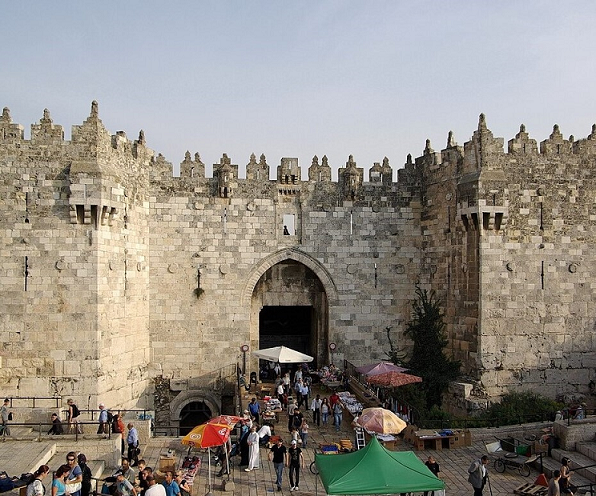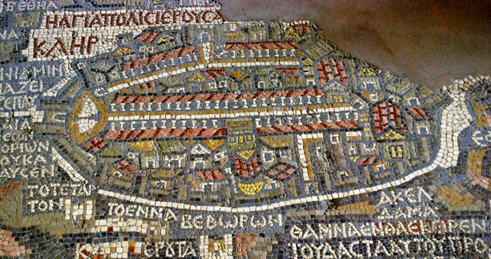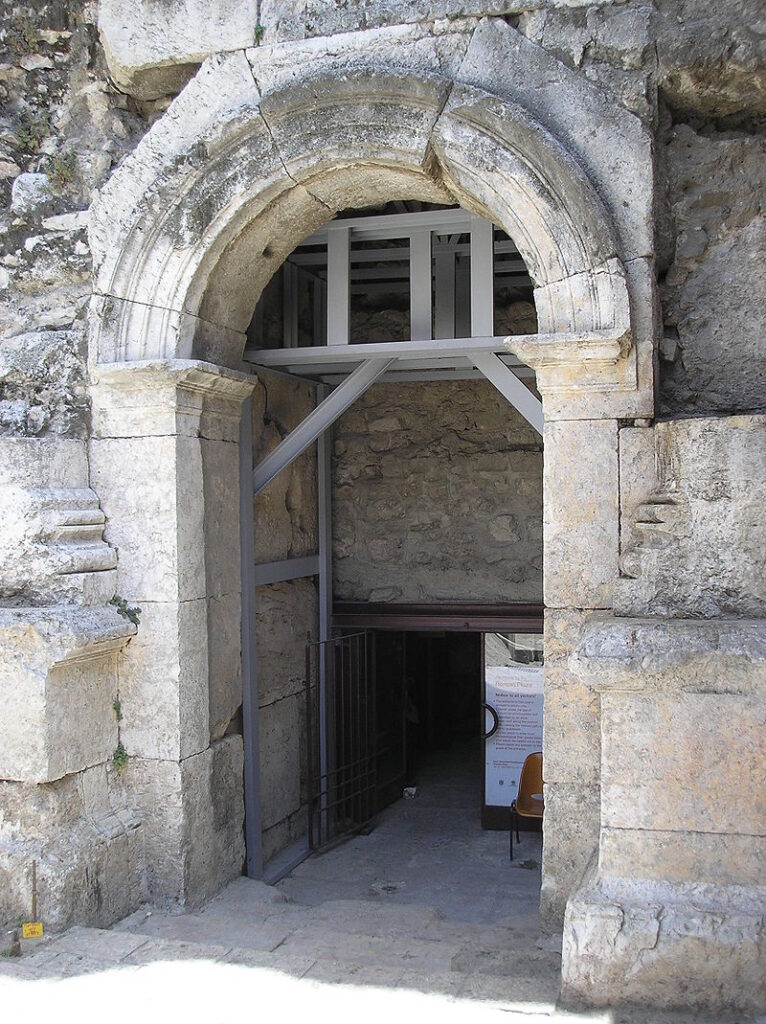Out of the North Evil Will Come

לאורך ההיסטוריה פלשו אויבים רבים לארץ ישראל מכיוון צפון, ובשל כך הפך הצפון בתודעתו הקולקטיבית של עם ישראל למקור של סכנה ורעה. הנביא ירמיהו התייחס לכך בנבואתו הידועה: "וַיֹּאמֶר ה' אֵלָי מִצָּפוֹן תִּפָּתַח הָרָעָה עַל כָּל יֹשְׁבֵי הָאָרֶץ." (א, יד), כשהוא מנבא את הפלישה הבבלית שהביאה בסופו של דבר לחורבנה של ממלכת יהודה בשנת 586 לפני הספירה.
Jeremiah's prophecy is also valid in the case of the city of Jerusalem itself. Most of the invasions and break-ins into the city over the years happened from the north, due to its topography. On the east and west sides it is protected by two deep valleys which connect in the south, and the only accessible approach for an attacking army is from the north.
The Damascus Gate, located in the northern wall of Jerusalem, is the most important, the largest and the most magnificent of the gates of the city wall. Due to its strategic location, it was built in a particularly fortified and protected manner. Two strong guard posts were set up above the gate, and the entrance to the city through the gatehouse winds twice, and not just once as at the Jaffa Gate for example, in order to block the charge of the enemy's army.
בעברית נקרא השער "שער שכם" משום שממנו יצאה הדרך שהובילה צפונה אל העיר שכם. מסיבה דומה הוא נקרא "שער דמשק" בשפות אחרות, מכיוון שאותה דרך המשיכה צפונה לכיוון דמשק. בערבית נקרא השער "באב אל עמוד", או שער העמוד, על שם עמוד שעמד בכיכר השער בתקופה הרומית.
השער הנוכחי נבנה על ידי העות'מאנים בשנת 1538 לספירה לאחר כיבוש ירושלים על ידי הסולטאן סולימאן המפואר, על גבי שרידים קדומים יותר. במאה ה- 1 לפני הספירה בנה הורדוס במקום מגדל שער כחלק מחומת העיר בימי בית שני. לאחר דיכויו האכזרי של מרד בר כוכבא שפרץ בשנת 132 לספירה החריב הקיסר הרומי אדריאנוס את ירושלים עד היסוד, ובנה במקומה עיר רומית בשם איליה קפיטולינה. בין השאר, בנה הקיסר שער ניצחון מפואר במקום בו שוכן כיום שער שכם. שער הניצחון היה בנוי במתכונת רומית קלאסית – פתח מרכזי גדול ומקושט ומשני צידיו פתחים קטנים יותר. אדריאנוס בנה שער ניצחון נוסף בתוך העיר, שאת שרידיו ניתן לראות ברחוב ויה דלורוזה. לצד השער בנו הרומאים שני מגדלי שמירה גבוהים, שאבניהם נלקחו מהריסות ירושלים החרבה ועל חלקם נשתמרה צורת הסיתות ההרודיאנית הטיפוסית. מול השער נבנתה כיכר עירונית רחבה, ובמרכזה הוקם עמוד גדול בגובה 22 מטר שבראשו התנוסס פסלו של הקיסר. העמוד, שזכרו השתמר עד ימינו בשמו הערבי של השער, שימש כנקודת ציון מרכזית וחשובה – נקודת האפס ממנה נמדדו המרחקים לערים אחרות ברחבי הפרובינקיה. גם בתקופה הביזנטית המשיכה הכיכר לשמש כשער הכניסה הראשי לעיר, אולם פסלו של הקיסר בראש העמוד הוחלף בפסל של ישו. מהשער נמתח הקארדו, רחובה הראשי של העיר הרומית, שהגיע עד לאזור כנסיית הקבר של ימינו. במפת מידבא, מפת הפסיפס המפורסמת שהתגלתה בעיירה מידבא בירדן, המתארת את ירושלים הביזנטית, ניתן לראות באופן ברור את רחוב הקארדו ואת כיכר העמוד בקצהו.

מתחת לשער העות'מאני אפשר לראות כיום את הקשת המזרחית של שער הניצחון הרומי. במקום פועל מוזיאון הכיכר הרומית, וניתן למצוא בו את שרידי הכיכר הרומית ובה ריצוף האבנים המקוריות. מגדל השמירה המזרחי השתמר גם הוא לכל גובהו כמעט – כ 12 מטרים, וניתן אף לעלות בגרם המדרגות המקורי המוביל כיום אל טיילת החומות הצפונית. על רצפת הכיכר אפשר לראות לוח משחק שחרטו החיילים הרומים – חריטות דומות ניתן למצוא בהר ציון ובמנזר האחיות מציון בויה דלורוזה.
The Damascus Gate continues to serve as a central entrance to the Old City, and tens of thousands of people pass through it - especially when crowds of Muslim followers arrive for Friday prayers at the Temple Mount. In the early 2000s, a new entrance plaza in the form of an amphitheater was built in front of the gate, which is used by the residents of Eastern Jerusalem for commerce and recreation.

(Anecdote authored by: עמיר)
(Number of views: 74)
